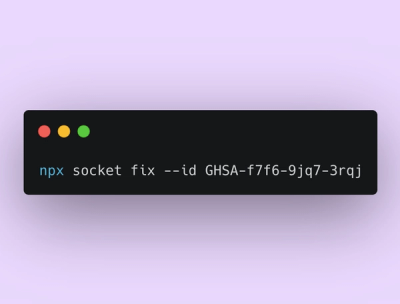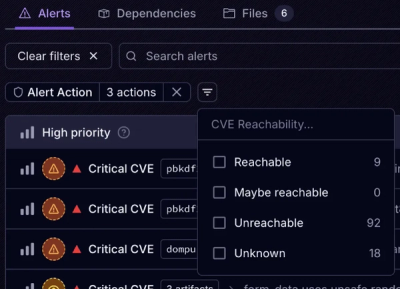
Product
Announcing Socket Fix 2.0
Socket Fix 2.0 brings targeted CVE remediation, smarter upgrade planning, and broader ecosystem support to help developers get to zero alerts.
github.com/fabioberger/airtable-go
Make sure you have Golang v1.6 or higher installed. If not, install it now.
Fetch airtable-go:
go get github.com/fabioberger/airtable-go
Import airtable-go into your project:
import "github.com/fabioberger/airtable-go"
Create an instance of the airtable-go client:
import (
"os"
"github.com/fabioberger/airtable-go"
)
airtableAPIKey := os.Getenv("AIRTABLE_API_KEY")
baseID := "apphllLCpWnySSF7q" // replace this with your airtable base's id
client, err := airtable.New(airtableAPIKey, baseID)
if err != nil {
panic(err)
}
You can now call methods on the client instance. All client methods are documented in the project's GoDoc page. You can also check out the stubbed and integration tests included in this project for working examples of all the client methods and options.
For Airtable specific documentation, see the interactive documentation at https://airtable.com/api.
Execute the following to run the stubbed out unit tests:
go test -v ./tests/stubbed_tests
In order to run the integration tests, you will need to copy this test Airtable base into your own Airtable account using the "copy base" button in the top right.
Next, set two environment variables corresponding to your Airtable API key and the baseID of your copy of the test Airtable base.
export AIRTABLE_TEST_API_KEY=YOUR_API_KEY
export AIRTABLE_TEST_BASE_ID=YOUR_TEST_BASE_ID
Now you can run the integration tests with:
go test -v ./tests/integration_tests
This library uses Semantic Versioning.
FAQs
Unknown package
Did you know?

Socket for GitHub automatically highlights issues in each pull request and monitors the health of all your open source dependencies. Discover the contents of your packages and block harmful activity before you install or update your dependencies.

Product
Socket Fix 2.0 brings targeted CVE remediation, smarter upgrade planning, and broader ecosystem support to help developers get to zero alerts.

Security News
Socket CEO Feross Aboukhadijeh joins Risky Business Weekly to unpack recent npm phishing attacks, their limited impact, and the risks if attackers get smarter.

Product
Socket’s new Tier 1 Reachability filters out up to 80% of irrelevant CVEs, so security teams can focus on the vulnerabilities that matter.